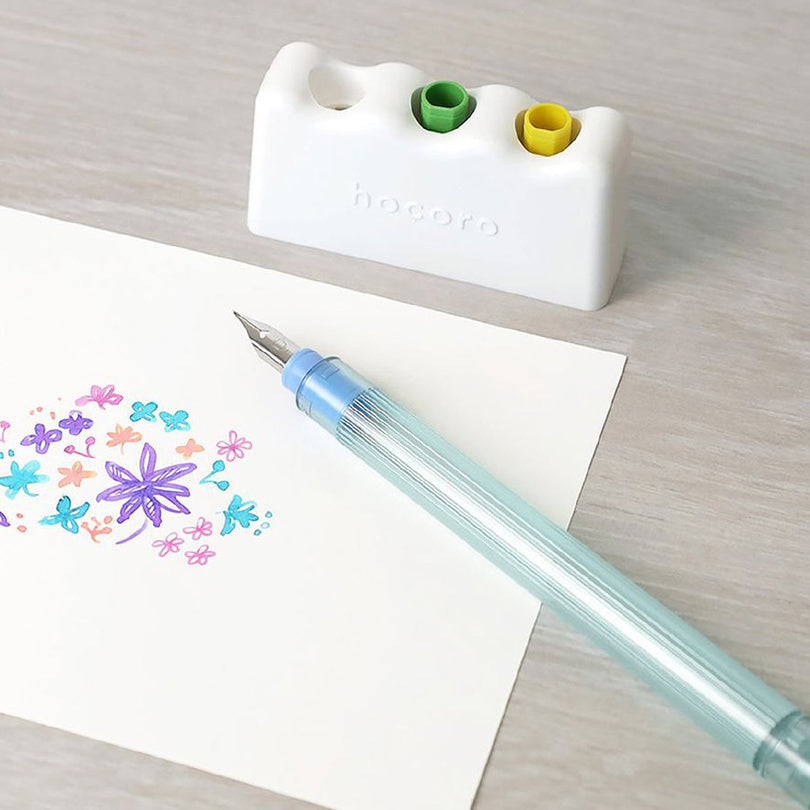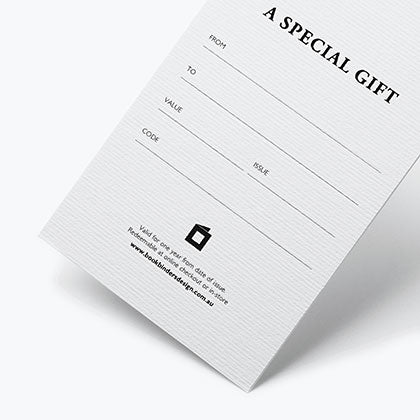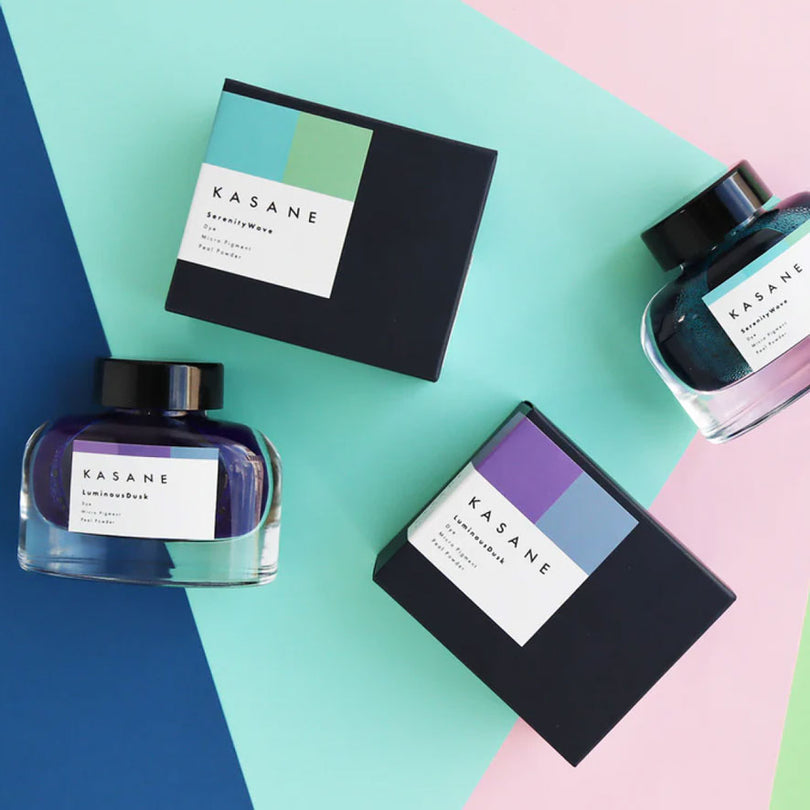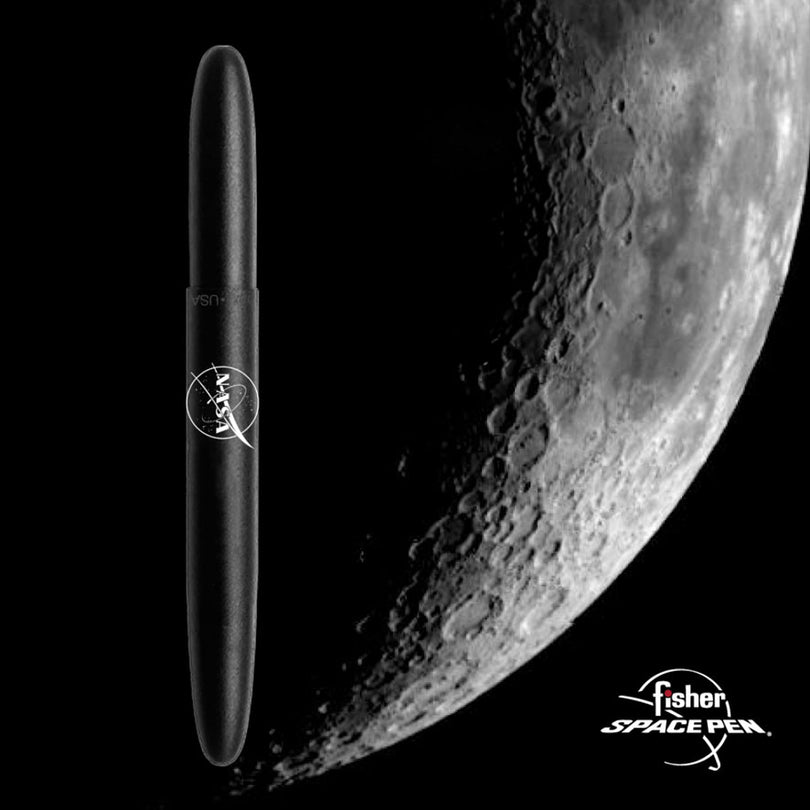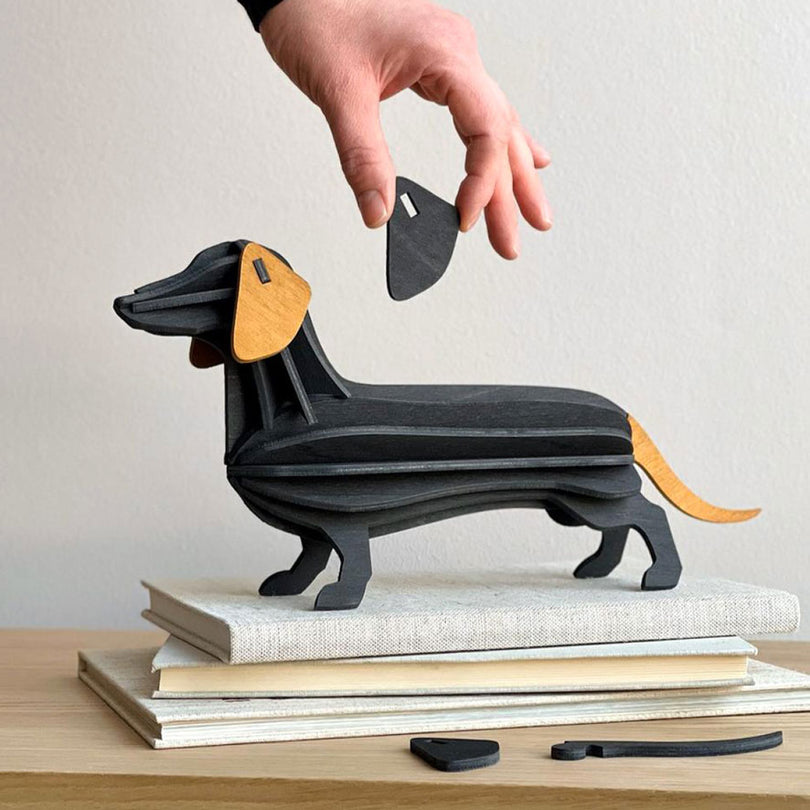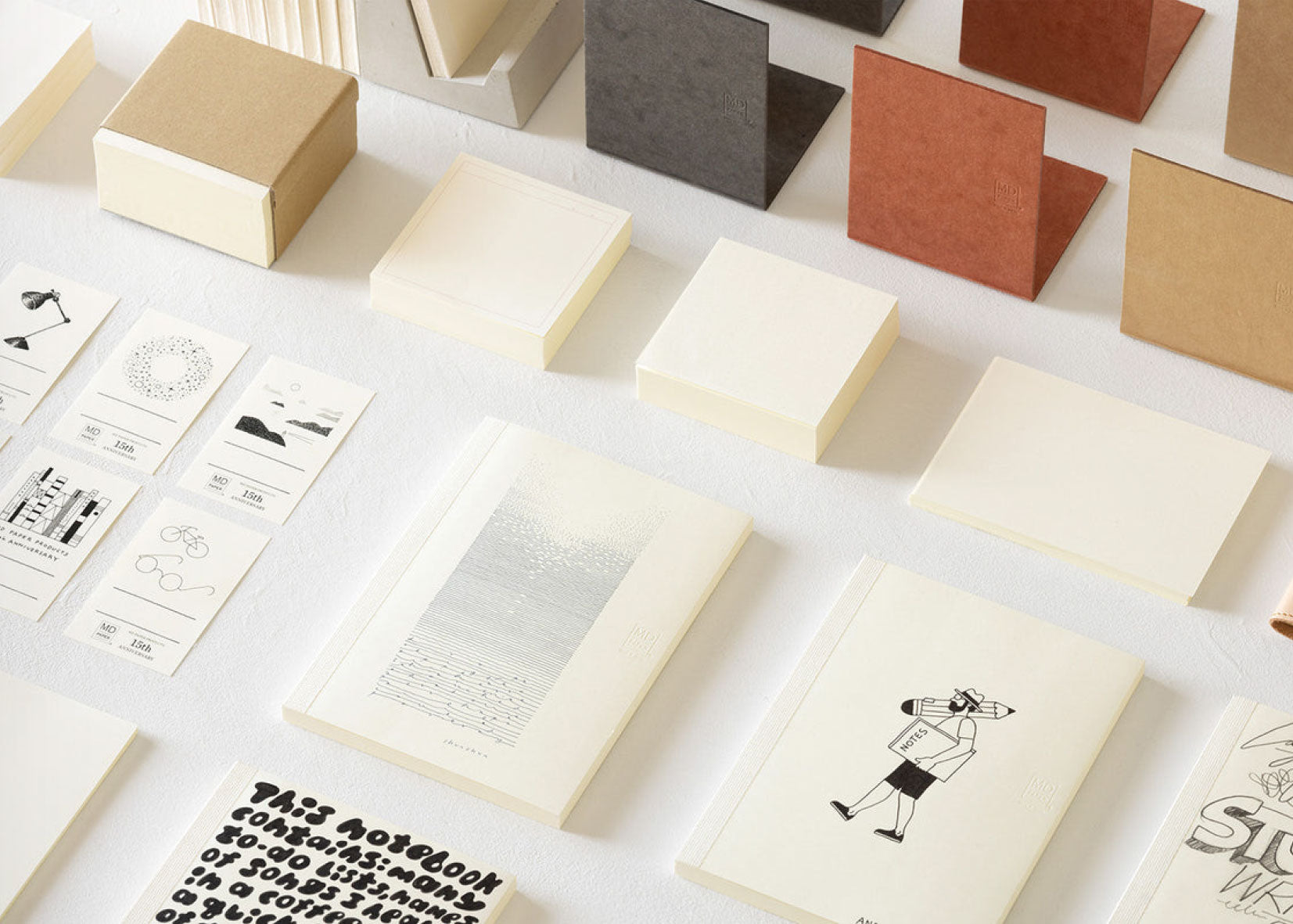If you’ve visited our shop in Little Collins street, there’s a good chance you’ve seen our ever-growing range of boutique paper brands.
Whether you’re looking for high-quality laid writing paper for some good old-fashioned letter writing, or super smooth, fountain pen friendly paper to show off all the sheening and shading of your favourite inks, we here at Bookbinders Design have you sorted.
With traditional European papermakers like Crown Mill alongside the elegant Japanese Midori and Tomoe River, it can be difficult to know where exactly to start. Hopefully we can help.
Why fancy writing paper?
Why not just a sheet of Reflex Ultra White A4 Copy Paper?
We think you already know why, but we’ll repeat it just for the sake of it. If we were to pass you a single sheet of standard printer paper and a single sheet of Takasago Premium 87.9gsm Bank Paper, you would immediately feel the difference.
We promise you; whatever problems you currently have, they’ll feel solvable and surmountable when you write them out on bank paper.
Even before touching pen to page, standard copy paper is likely to leave you feeling cold. A page that is almost too blank and too characterless, almost uncanny in its manufactured “purity”.
The kinds of paper we’ll have a gas about today will, in their own unique ways, all have an honest and handcrafted nature to them that even before being sullied with Sailor Shikiori ink and drenched in character.
It can be quite eye-opening when diving into the rabbit-hole that is small-production papers. Whether it be the beautiful, old-world charm of the laid paper pattern present across Crown Mill’s line, to the satisfying, crinkle of Tomoe River paper.
Types of premium writing paper (some, anyway)
Laid Paper
The majority of fine writing paper we carry in the Bookbinders Design shop falls into this category. Laid paper is easily distinguished by just holding it up to the light, which will reveal a ribbed texture to the page. Almost like a watermark in and of itself, this texture is a leftover from the manufacturing process.
In the pre-mechanical period of European paper making (so, from about the 12th century to the 19th century), laid paper was the main style of paper produced before being supplanted by wove paper. Laid paper can be made both by hand, as well as with the aid of machines. Before the mechanisation of paper making, the papermaker would use a wire sieve mounted in a rectangular mould to produce a single sheet at a time.
If we were to pick a favourite of the bunch, it would have to be laid paper.
There’s just something so tactile about it. It’s the same sort of feeling as looking up-close at a really well sewn garment or an oil painting. Not only is the finished product spectacular, but you can almost see the person who made it for you.
Examples: Crown Mill
Cotton Paper
Now, Cotton Paper can certainly be laid paper, but while all laid paper is… laid… not all laid paper is cotton.
Most papers nowadays, and in-fact most papers post the mid-19th century, are wood pulp papers. In a classic case of “They don’t make ‘em like they used to,” traditional cotton fibre-based paper has many distinct benefits over common wood pulp paper.
Whilst wood pulp paper has much to be celebrated for, namely the democratisation of writing and publication, it’s also a fickle thing. Highly acidic, early wood pulp papers have proven to be an absolute nightmare for archivists. The papers are so notorious for decay that the phrase “slow fire” was coined to describe the phenomenon. If you ask us, “slow fire” is a phrase that is far too cool sounding than it has any right to be.

As its name suggests, cotton paper is produced using cotton linters or from recycled cloth. There once was an entire occupation around the collection of said recycled cloth. The folks who performed this job were called “Ragpickers”. That’s two names we find way too cool and we’re still in the Cotton Paper section of the blog. High-quality Cotton Paper has the ability to last for centuries without significant fading, discolouration or deterioration.
Examples: Midori Cotton
Wove Paper
Easily the most commonly found paper type today is what is called Wove Paper.
First emerging in Asia, handmade Wove Paper was first produced by using a wooden mould that contained a finely woven brass vellum (or wire cloth), upon which the paper pulp was applied and dried, creating a smooth, uniform surface.
Wove Paper, prior to the mid-19th century, was primarily made from pulp produced from cotton and linen rags much in the same way Laid Paper was at the same time. It was introduced to Europe by John Baskerville in 1757. Baskerville utilised this new revolutionary, smooth Wove Paper for his famous edition of Virgil, using paper stock that had been made by Englishman James Whatman the Elder, a man now credited as the inventor of European Wove Paper (or Velin).
What Wove Paper potentially gains when it loses the handcrafted texture of Laid Paper is better performance with ink.
Wove Papers regularly outperform Laid Paper when it comes to preserving the character of fountain pen inks. If you want fine quality papers that can still show off your sheen and shading, Wove Paper may be worth looking into.
Example: À L'aise calligraphy practice sheets
Bank Paper
First produced by Mitsubishi Paper Mills (not related to the Mitsubishi of the Mitsubishi Hi-Uni pencils, but oddly related to the other automobile and white goods Mitsubishi), Bank Paper was originally developed for use in Japan’s growing corporate industry.
Bank Paper, from the outset, has aimed for a silky-smooth feel as if you’re writing on a cloud. More of a specification than a manufacturing method, Bank Paper, in a similar way to the term “Foolscap” or “Fool’s Cap” paper, has become almost a short-hand for “high quality” paper in Japan.
While Bank Paper would no doubt be a spectacular choice of paper for general letter writing, it’s with fountain pens that this paper really shines. If you’re a fan of rich in character inks like Sailor Manyo, Kyo-No-Oto or Vinta inks, then Bank Paper may be for you.
I’m going to steal an audiophile term here, but Bank Paper has a tendency to be almost “transparent” to whichever ink you’re using with it. By that we don’t mean that the paper is translucent, but instead that the paper truly represents everything an ink has to offer. If an ink sheens, it’ll sheen on Bank Paper. If an ink shades, it’ll shade on Bank Paper.
Example: Yamamoto Paper Tasting Silky Paper
Onionskin Paper
You’ll be forgiven for never having heard of this one, particularly if you’re under a certain age, but once upon a time, Onionskin paper was close to ubiquitous.
While it’s now mostly used as an alternate word for tracing paper, Onionskin was also widely used in the day of typewritten carbon copies, as well as airmail letters.
Despite it’s name, no onions are harmed in the production of Onionskin paper. Instead, the name is merely colloquial, as Onionskin paper can tend to resemble the thin and papery skin of an onion.
What makes Onionskin paper Onionskin is really its thickness, or more pertinently it’s lack of thickness. Seemingly impossibly thin at times and yet surprisingly strong, Onionskin seems to defy logic. It can be so thin and lightweight that it’s borderline translucent, and yet will regularly take ink like a champ.

Some Onionskin paper, like the 27.9gsm (you read that right) Typewriter Paper in our Yamamoto Paper Tasting Vol.7, was able to be stacked up to half a dozen times with carbon paper through a typewriter. This meant that a typist only needed to type a page once in order to get six fresh copies at an instant. In the age before home printers and word processors in general, this was a godsend.
How to Choose the Best Writing Paper?
Interrogate your intentions and your taste - do you want an old world feel for a particularly important letter you have to write, or do you just want to flaunt everything your Sailor Manyo and Vinta Inks have to offer?
Something we didn’t have the space to write about here today is the rich history of each of the brands that we carry here at Bookbinders.
You can browse our entire range of premium paper products and if you, like us, become addicted to sampling all manner of different papers, have a look at the Yamamoto Paper Tasting sets here.
Questions? We’d love to hear from you, so don’t be shy! Contact us on Facebook, Instagram or via email at info@bookbindersdesign.com.au


